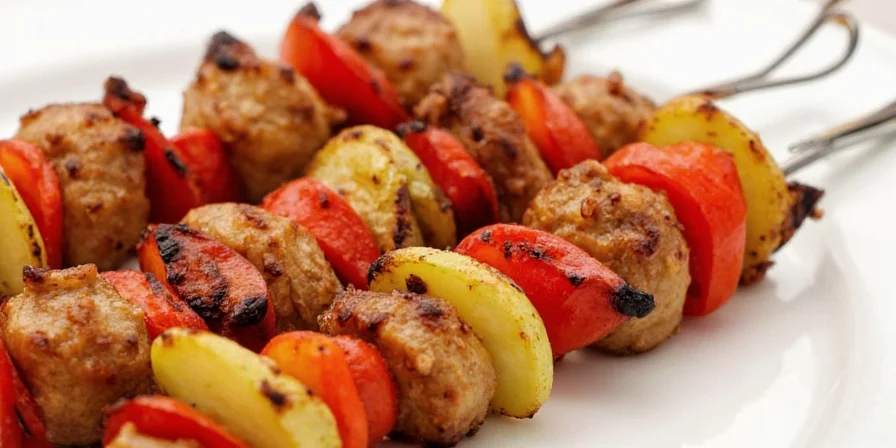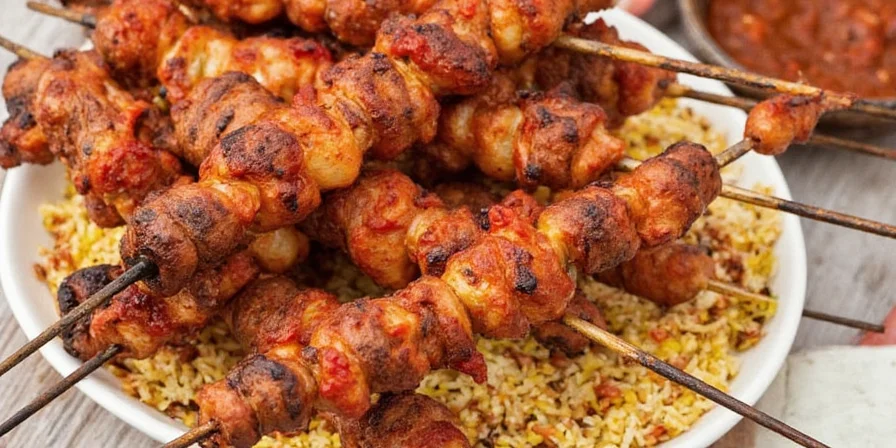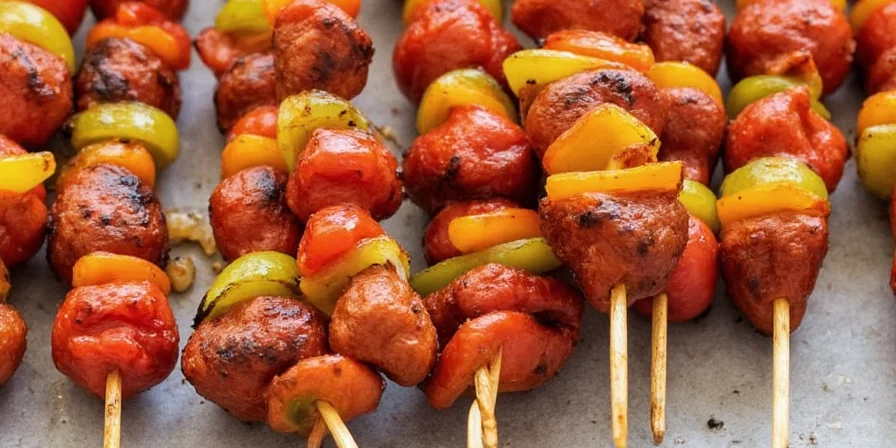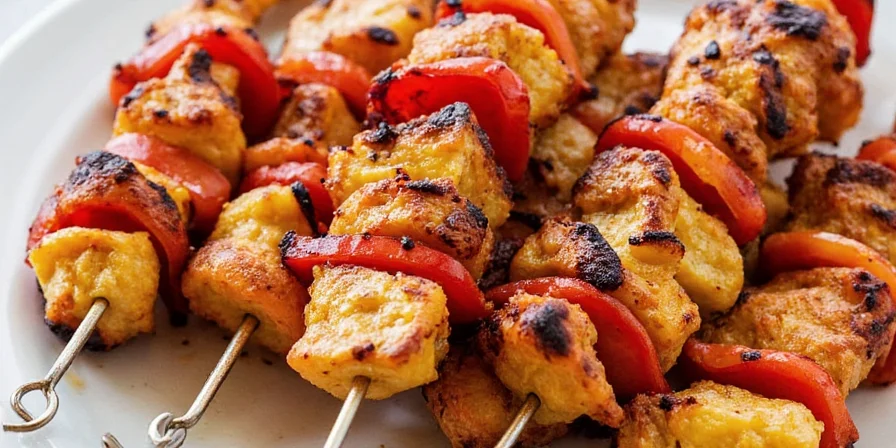Pinchito Problems? 7 Spicy Secrets to Mastering Spanish Skewers Like a Pro!
Table of Contents
- What Exactly Are Pinchitos?
- Why You Should Be Obsessed with These Tiny Torches of Flavor
- The Spice Blend That’ll Make Your Pinchitos Legendary
- Meat Selection: From Lamb to Pork, What Works Best
- Skewer Strategy: Wood vs. Metal – Which One Wins?
- Grilling Tips: Fire Up Your Grill Without Burning Down the Neighborhood
- Pairings: What Goes with Pinchitos? (Hint: It’s Not Just Mojo)
- Common Mistakes and How to Avoid Them
- Conclusion
What Exactly Are Pinchitos?
If you’ve ever visited Andalusia or scrolled through a food blog that made your mouth water uncontrollably, you might have stumbled upon pinchitos. These Spanish skewers are not just little sticks of meat—they’re culinary torches passed down through generations in southern Spain.

Picture this: juicy morsels of marinated meat sizzling over open flames.
Why You Should Be Obsessed with These Tiny Torches of Flavor
Let’s face it—no one wants dry, bland meat. But when done right, pinchitos deliver an explosion of flavor in every bite. They’re:
- Perfectly sized: Bite-sized for easy snacking
- Fully customizable: Mix meats, veggies, even cheese!
- Spice-forward: A bold marinade is key
- Fire-kissed: Charred edges add texture and depth
The Spice Blend That’ll Make Your Pinchitos Legendary
Here’s where the magic happens. The traditional Andalusian spice mix, known as “masa de pimentón”, typically includes:
| Ingredient | Purpose | Quantity |
|---|---|---|
| Pimentón de la Vera | Smoky depth | 2 tbsp |
| Cumin | Earthy warmth | 1 tsp |
| Garlic powder | Bold base note | 1 tsp |
| White vinegar | Tenderizes meat | 1 tbsp |
| Olive oil | Binds the flavors | 3 tbsp |

Mix, marinate, and let the magic happen overnight.
Meat Selection: From Lamb to Pork, What Works Best
While traditionally made with lamb, modern chefs love experimenting with different cuts and proteins. Here’s a breakdown:
| Meat | Pros | Cons |
|---|---|---|
| Lamb shoulder | Rich flavor, tender when slow-cooked | Can be fatty if not trimmed properly |
| Pork neck | Juicy, slightly sweet | May require longer marinating |
| Chicken thighs | Lean yet flavorful | Dries out faster than red meats |
| Beef sirloin | Firm texture, bold taste | Expensive, needs quick grilling |

Choose wisely—and always cube uniformly for even cooking.
Skewer Strategy: Wood vs. Metal – Which One Wins?
The age-old debate: should you go natural or metal?
- Wooden skewers: Eco-friendly, classic look—but must be soaked in water for at least 30 minutes before use to avoid catching fire.
- Metal skewers: Reusable, heat conductive, no soaking required—but can get dangerously hot during grilling.
Pro Tip: Use metal if you're flipping often; wood gives a rustic charm perfect for backyard bbqs.

Grilling Tips: Fire Up Your Grill Without Burning Down the Neighborhood
Mastering the flame is crucial. Here’s how to do it without turning your backyard into a charcoal briquette graveyard:
- Use medium-high heat – too hot and you char the outside before the inside cooks.
- Keep them moving – flip every 60–90 seconds to prevent flare-ups.
- Don’t overcrowd – give each skewer space to breathe and brown properly.
- Baste lightly – a splash of olive oil or extra marinade helps keep things juicy.
- Rest before serving – like any good meat, they need time to reabsorb juices.

Pairings: What Goes with Pinchitos? (Hint: It’s Not Just Mojo)
While mojo sauces are traditional in parts of Spain and Latin America, there’s a world of options to explore:
- Mojo picón – Red pepper-based, smoky and spicy
- Green mojo – Made with cilantro, parsley, garlic
- Chimichurri – Argentinian herb sauce with a tangy kick
- Alioli – Garlic aioli for a creamy contrast
- Harissa yogurt – North African meets Mediterranean fusion

Try a few and find your favorite combo!
Common Mistakes and How to Avoid Them
Even pros mess up their pinchitos sometimes. Here’s what NOT to do:
| Mistake | Why It Fails | Fix It By... |
|---|---|---|
| Too big meat cubes | Uneven cooking, dry centers | Cut into 1.5-inch pieces |
| Not marinating long enough | Flavor stays on surface | Marinate for at least 4 hours |
| Overloading skewers | Heat doesn't reach all sides | Stick to 3-5 pieces per stick |
| Using frozen meat | Uneven thawing = uneven cooking | Thaw fully before cubing |
| Ignoring fat content | Too lean = too dry | Choose cuts with some marbling |

Conclusion
There you have it—the ultimate guide to mastering Spanish pinchitos like a seasoned abuelo at Sunday barbecues. Whether you’re using lamb, pork, or chicken, the key is balance: between spice, fat, fire, and patience.
So fire up the grill, soak those wooden sticks, and get skewering. Your friends will thank you, your taste buds will sing, and your next party will never be the same again.
Buen provecho!











 浙公网安备
33010002000092号
浙公网安备
33010002000092号 浙B2-20120091-4
浙B2-20120091-4